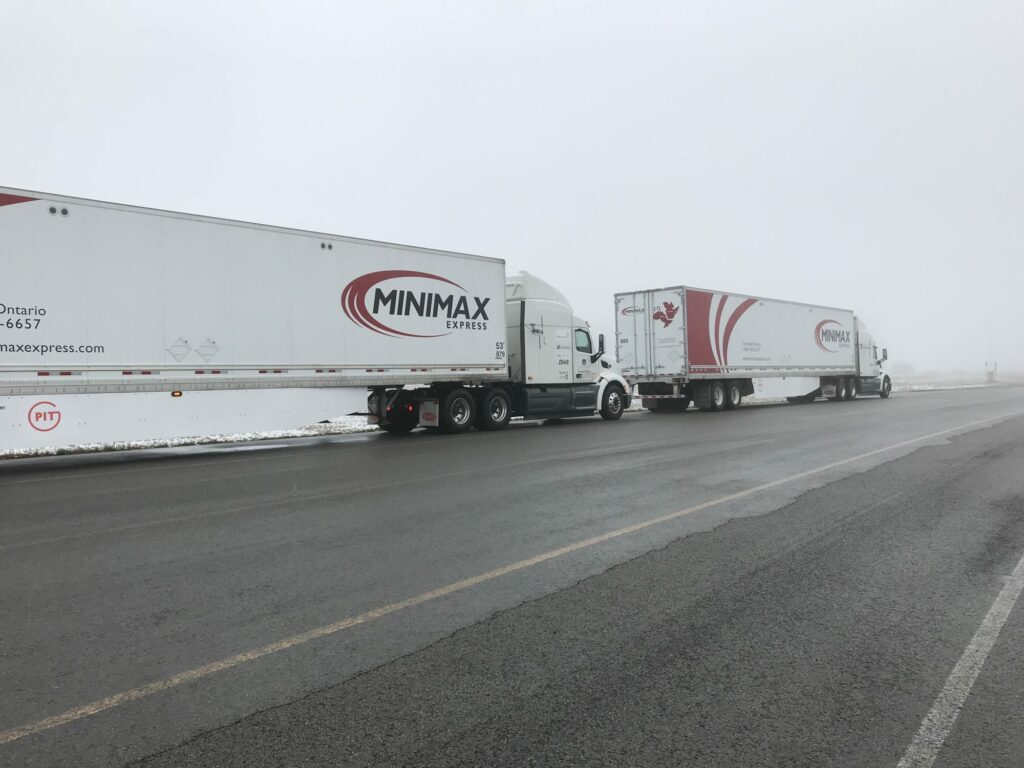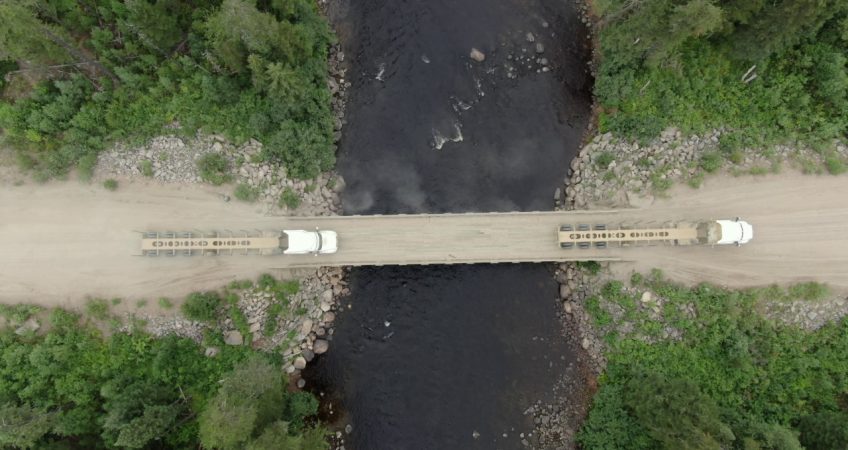Auburn researchers out to prove platooning truck benefits
Researchers at Auburn University continue to report the benefits of platooning trucks, and not just on paved highways.
The application of autonomous truck technology makes it possible to run a series of tractor-trailers from nose to tail – and with limited following distances – in the name of boosting fuel economy and offsetting driver shortages.

How it works
While a lead truck is controlled by a driver, the equipment to the rear leans on sensors and communications systems, with autonomous controls adjusting speeds, braking, and steering.
Auburn researchers tested the concept over three years, putting a pair of Peterbilt Model 579 tractors with adaptive cruise control through their paces.
The equipment with Level 1 and 2 autonomous controls weren’t limited to test tracks alone, either. The platooning trucks crossed the Blue Water Bridge in Sarnia, Ont., and traveled Michigan’s I-69 and Quebec’s Autoroute 40. Working with FPInnovations, Auburn researchers even took the test to forestry resource roads, and north of Trois Rivieres in LaTuque, Que.

On the highway, lead tractor-trailers saw fuel economy improve 3-4%, while tractor-trailers to the rear saw fuel economy increase 10-12%, says David Bevly, professor and director of Auburn’s GPS and vehicle dynamics lab.
Thank the improved aerodynamics.
“The closer I can safety follow, the better the overall fuel performance,” he added during a presentation about related operating principles and benefits, hosted by FPInnovations.
In an offroad application like forestry, the potential benefits hinge more on the ability to address limited number of truck drivers to do the work. Such routes also limit interactions with other vehicles.
With proper funding and partners, prototypes could be ready to operate on forestry roads in just one to two years, Bevly says.
Overlapping technologies
Tracking and controlling the exact location and position of the trucks require a series of overlapping technologies.
GPS receivers in the test trucks were able to pinpoint positions down to the centimeter, delivering required information over a wifi-like Dedicated Short Range Communications (DSRC) network. Control commands were delivered over the J1939 data bus. Radar sensors on the following vehicles tracked the trailers ahead of them, picking up 64 individual targets at a time. Cameras tracked lane positions by monitoring painted lines.
Each technology has strengths and weaknesses, though. A GPS signal can maintain readings even in a turn, unlike radar that needs more in the way of a direct line of sight. Under a bridge or along a heavy-forested road, the radar is needed to fill the gaps.
Lessons to learn
There are also still lessons to learn.
“The sensors that we’re using will work fine in heavy snow,” Bevly says as an example. “The issue will be vehicle traction.”
On forestry roads with significant grades, meanwhile, the challenge can involve maintaining the tight following distances.
“I might have one truck that’s going downhill while the other truck is going uphill,” he says, referring to one challenge with measuring the gap between a bumper and the trailer ahead of it. What started as a 120-foot gap has improved, though. “We’re taking into account that road grade in real time.”
“There’s definitely a need to improve not only the control system but add additional, redundant sensors,” he says.
Equipment mixes will have their own role to play.
“If I have an older trailer that is heavily loaded in the rear, where I don’t have the same stopping capabilities of the lead truck, is really one of the biggest issues,” Bevly says. In some ongoing tests, OEMs are addressing the difference by requiring tractors and trailers to meet certain specifications.
“They basically only let them run a newer trailer with new tires,” he says as an example.
But Bevly believes the gaps between the prototypes and real world platooning applications continue to close. Like the spaces between the trucks themselves.
Will truck platooning save fuel in the real world?
Have your say
This is a moderated forum. Comments will no longer be published unless they are accompanied by a first and last name and a verifiable email address. (Today's Trucking will not publish or share the email address.) Profane language and content deemed to be libelous, racist, or threatening in nature will not be published under any circumstances.
Not a good idea in traffic. Just imagine traffic trying to merge when 2 or 3 or more of these are travelling along 20 feet apart.
Bad desogn and unsafe
Great article, John!
The company I work with, KVH Industries, supplies the fiber-optic based inertial measurement units (IMU) for these autonomous trucking systems.
An important aspect; not only does the use of inertial components continuously synch with and simultaneously correct for the error from using only satellite (GNSS) receivers, it also keeps the truck within centimeters over periods (minutes) of satellite outage. These can occur in tunnels, urban canyons (downtown) or inclement weather.
I can’t wait to see these convoys on the road!
Thanks again